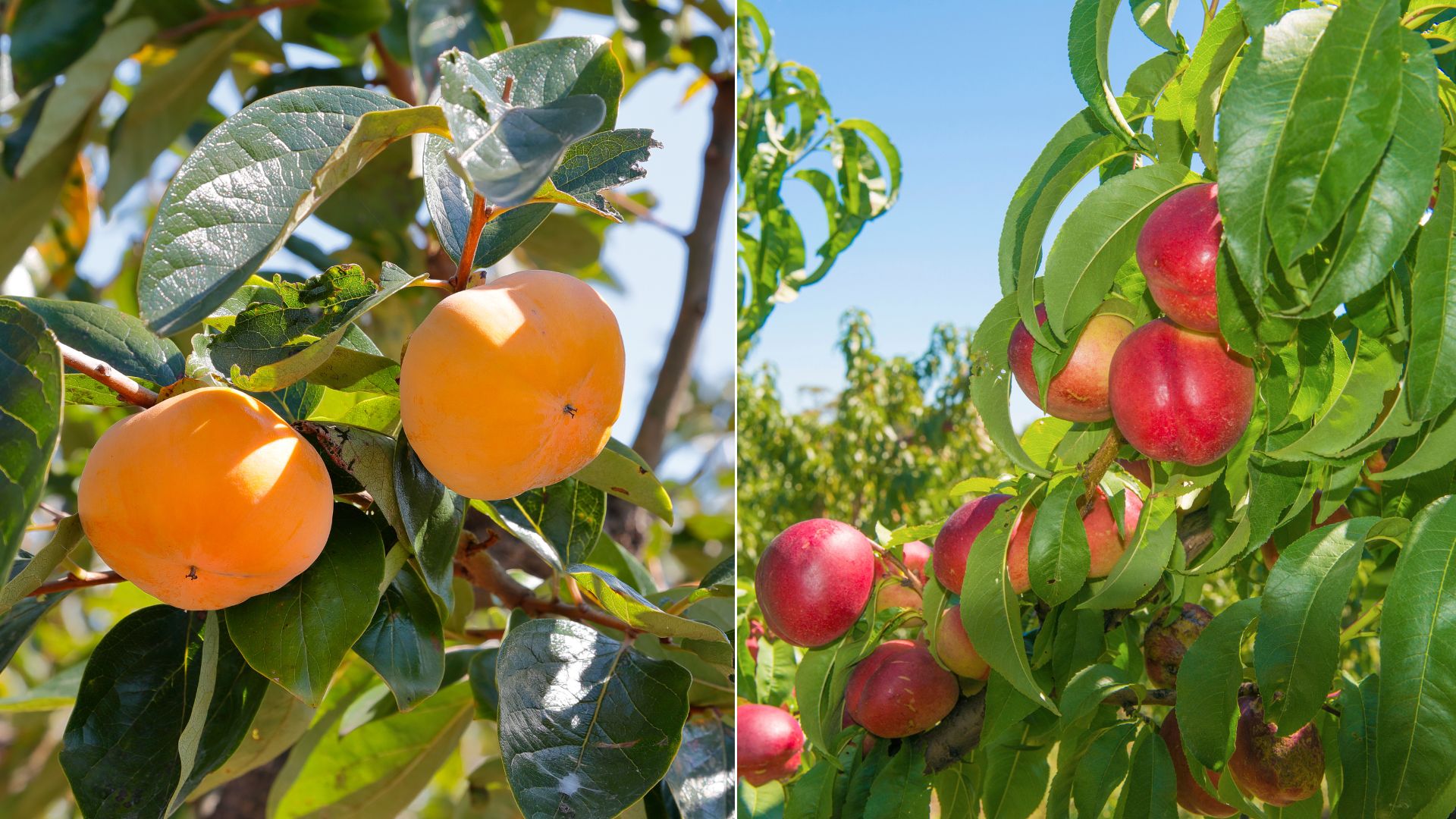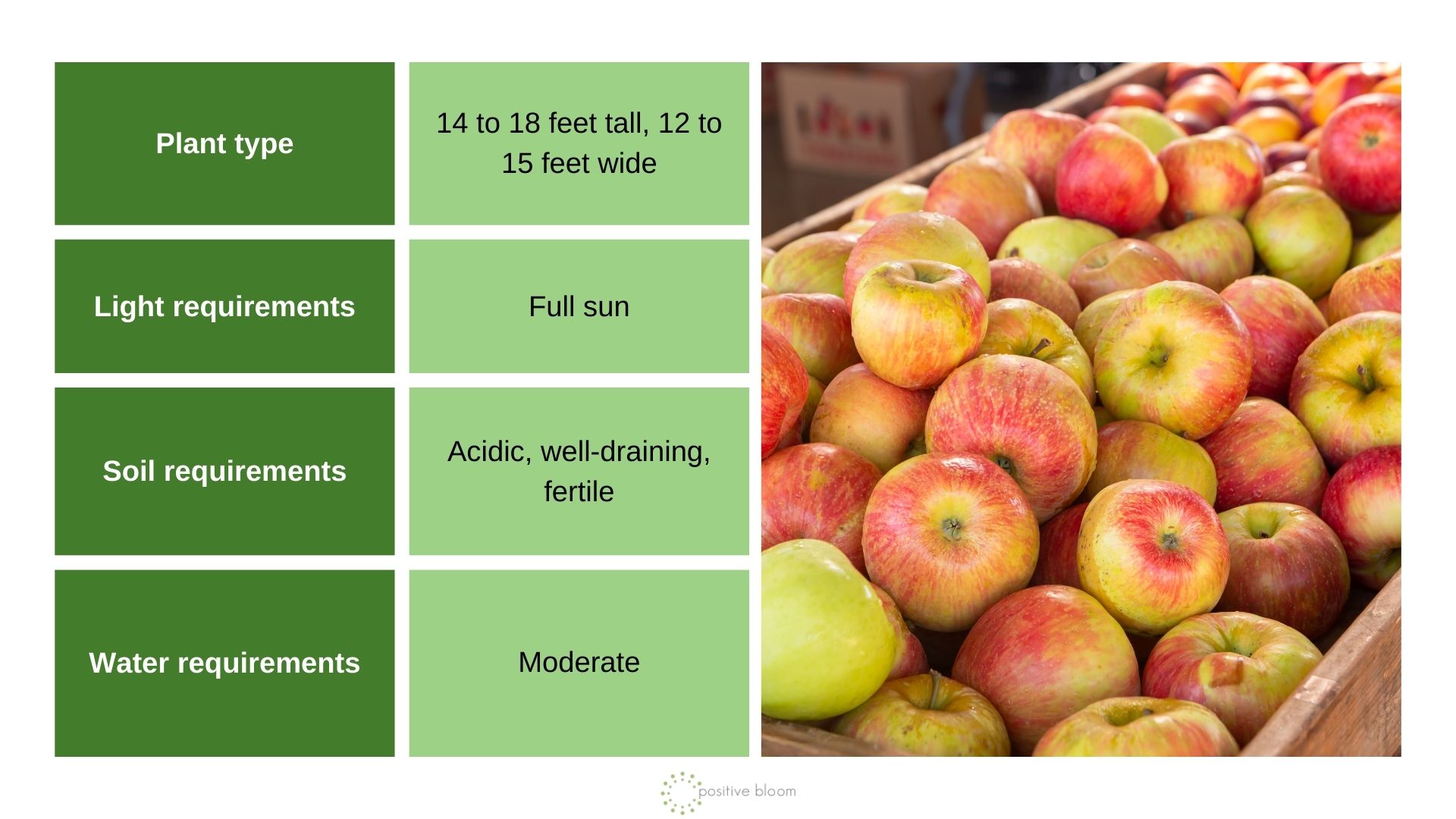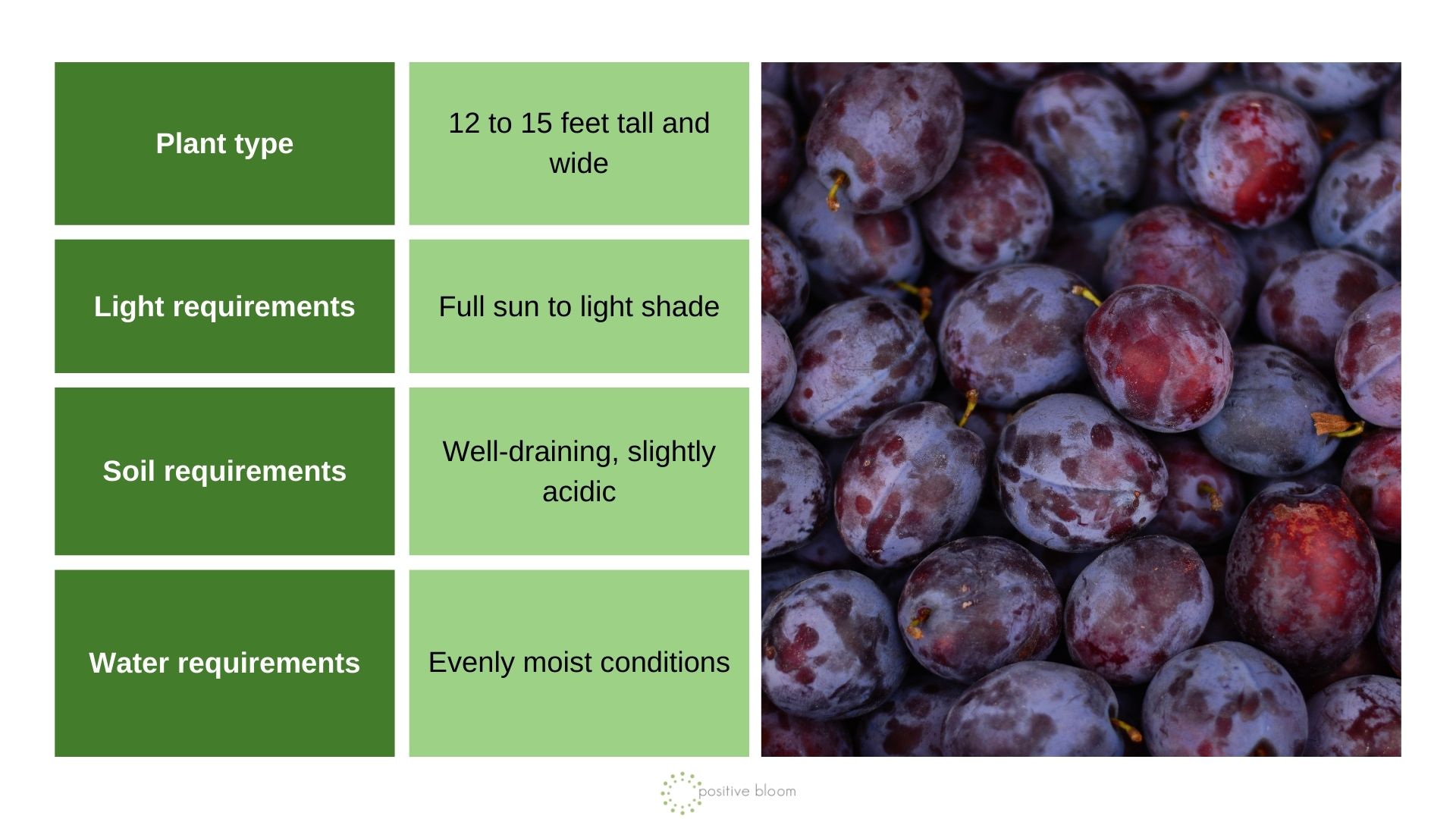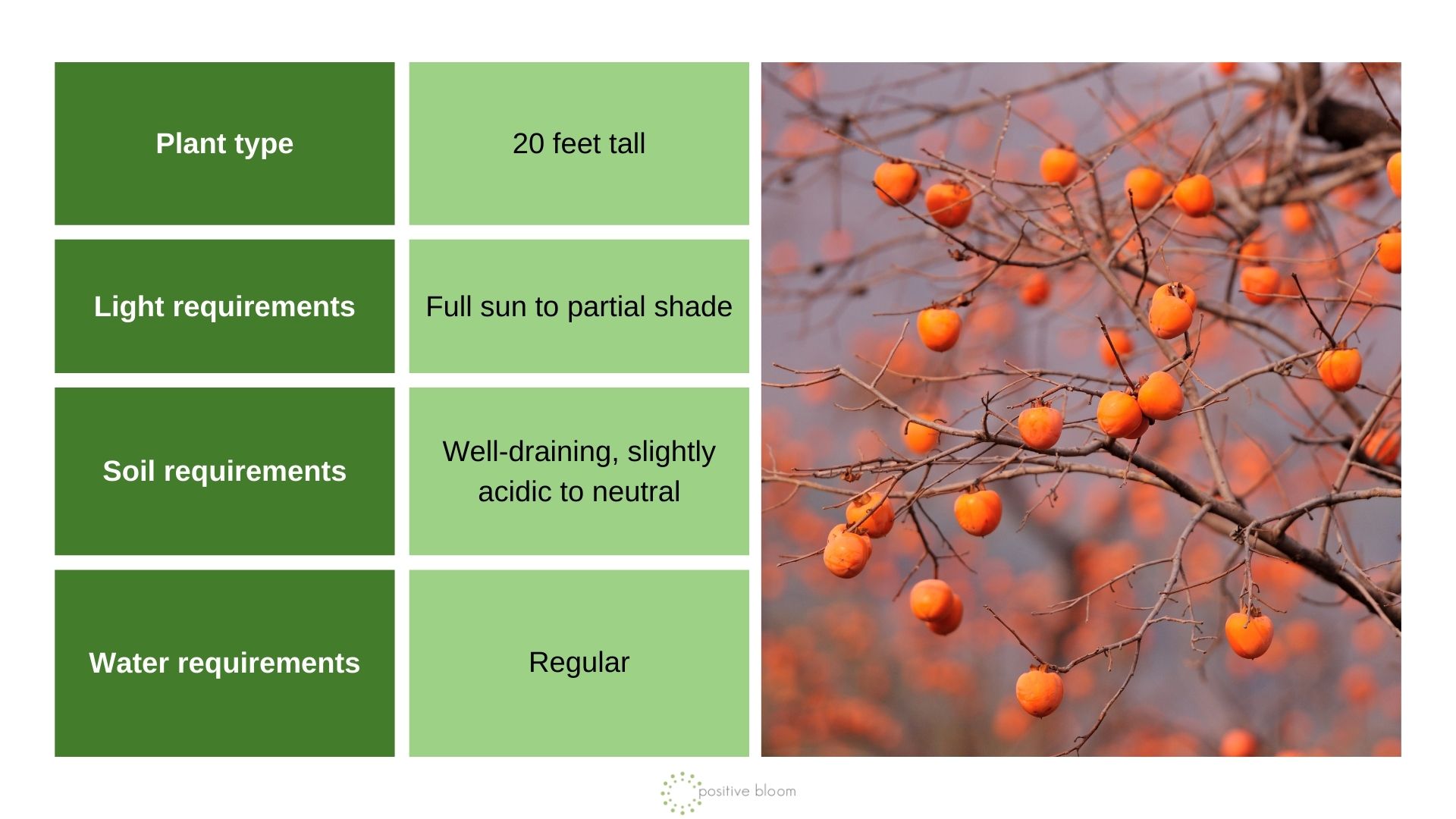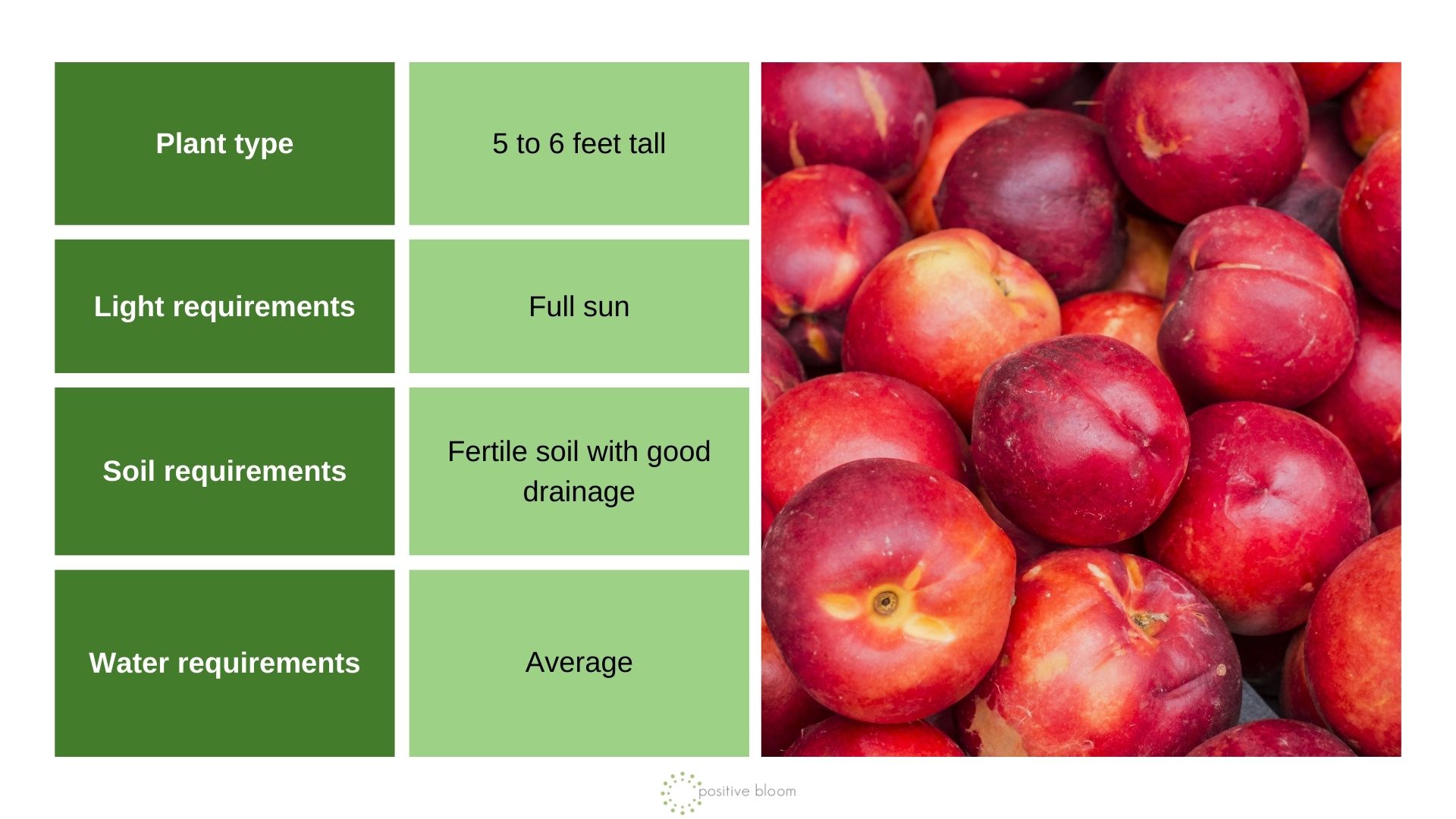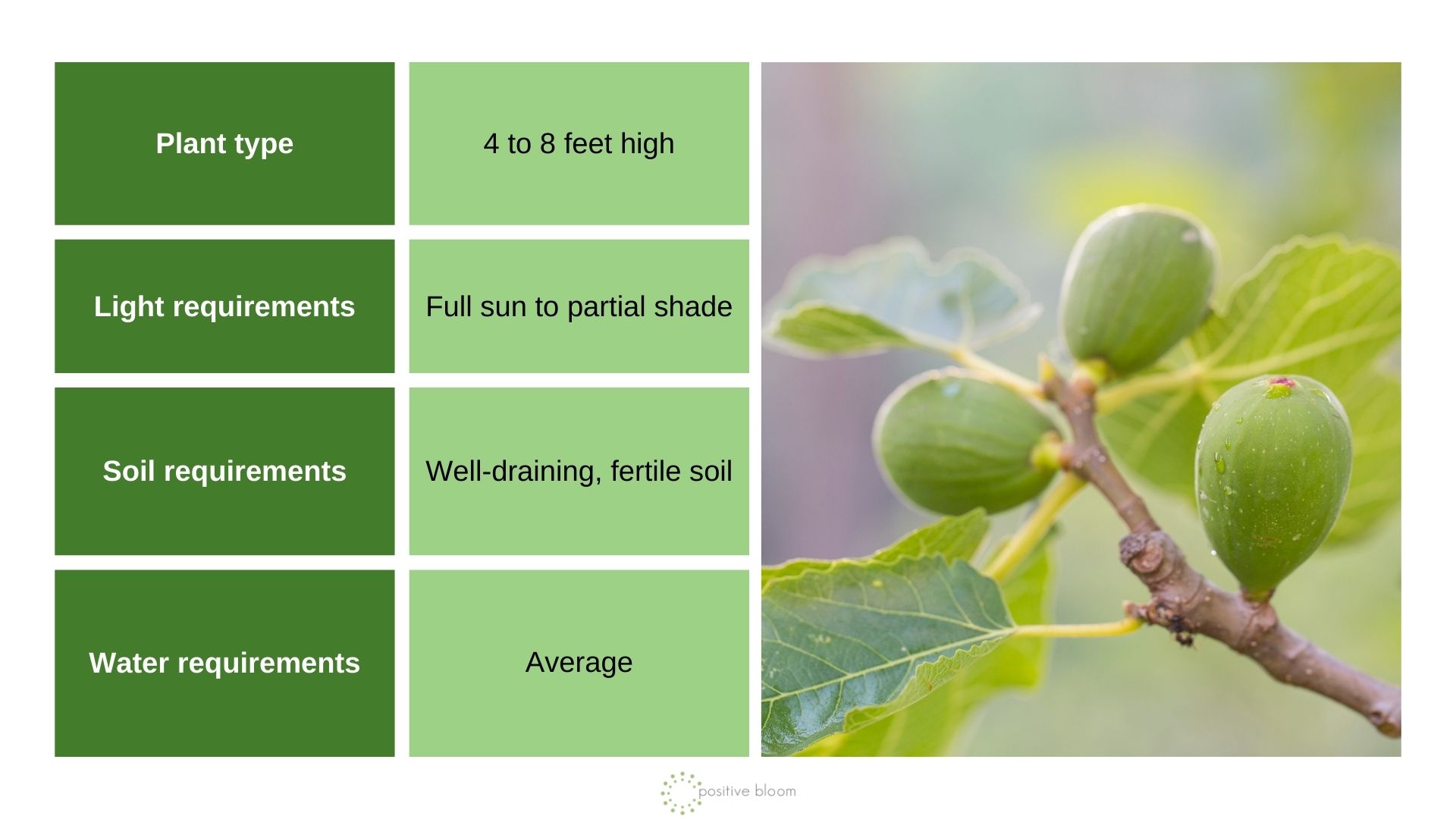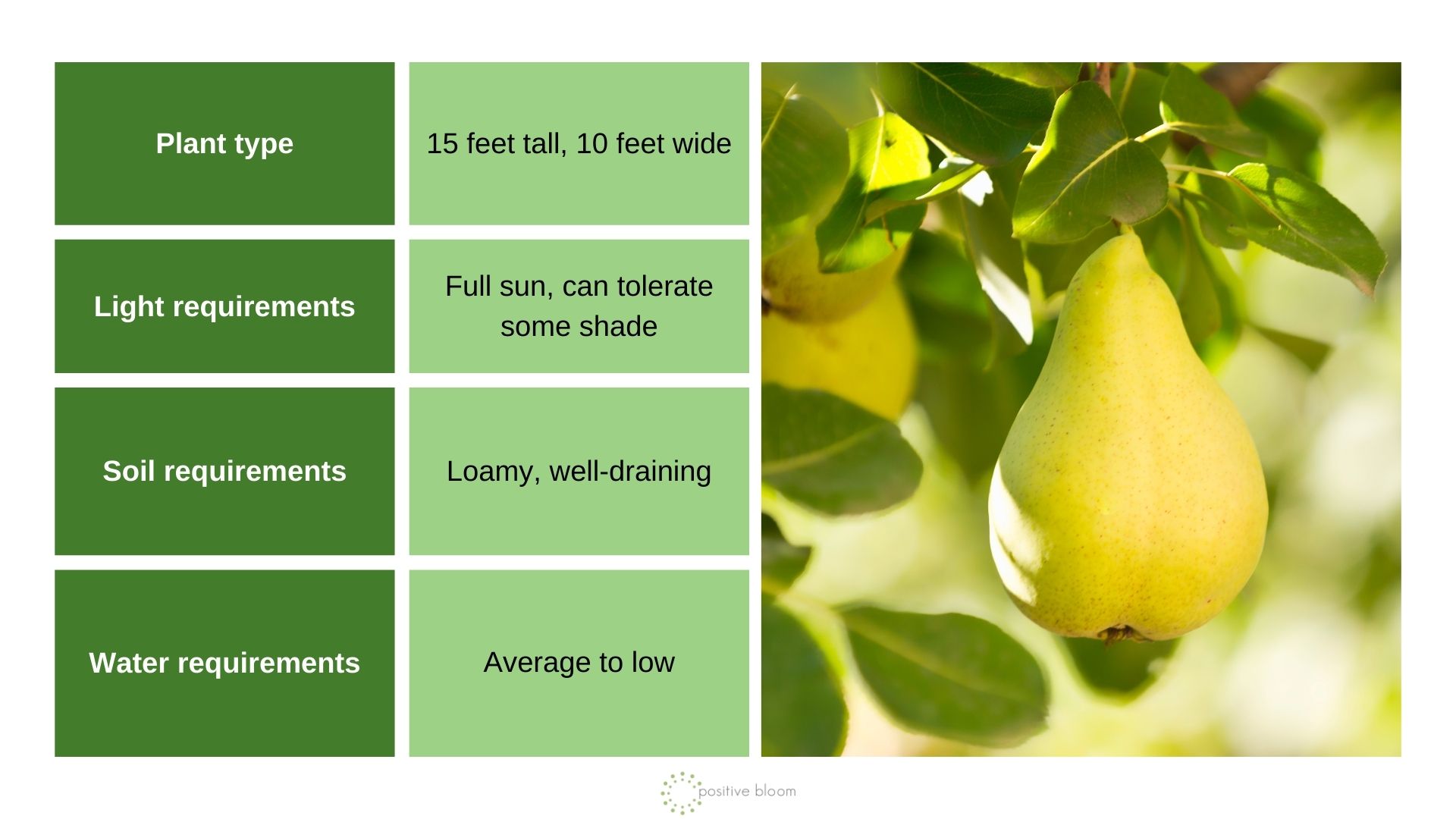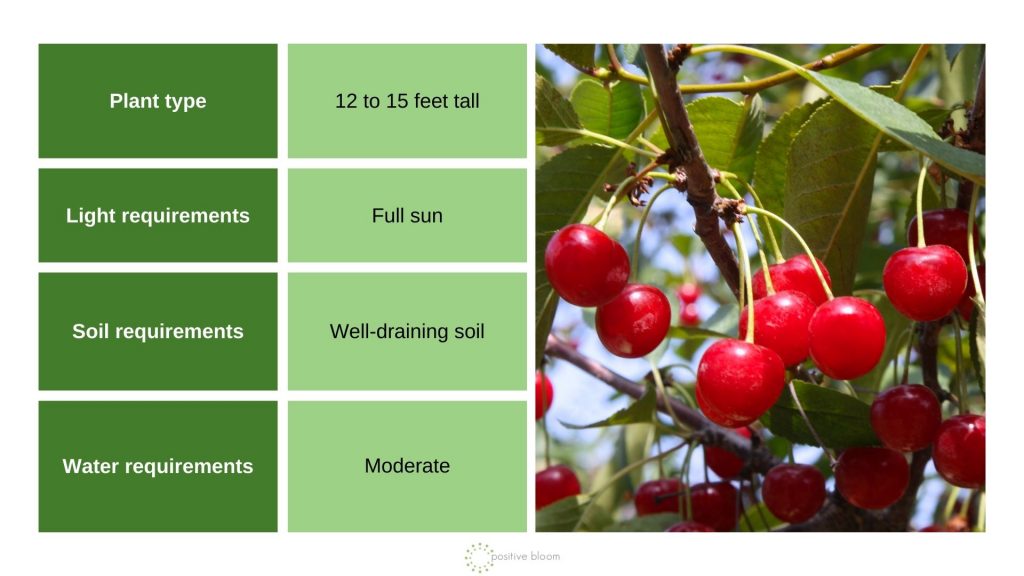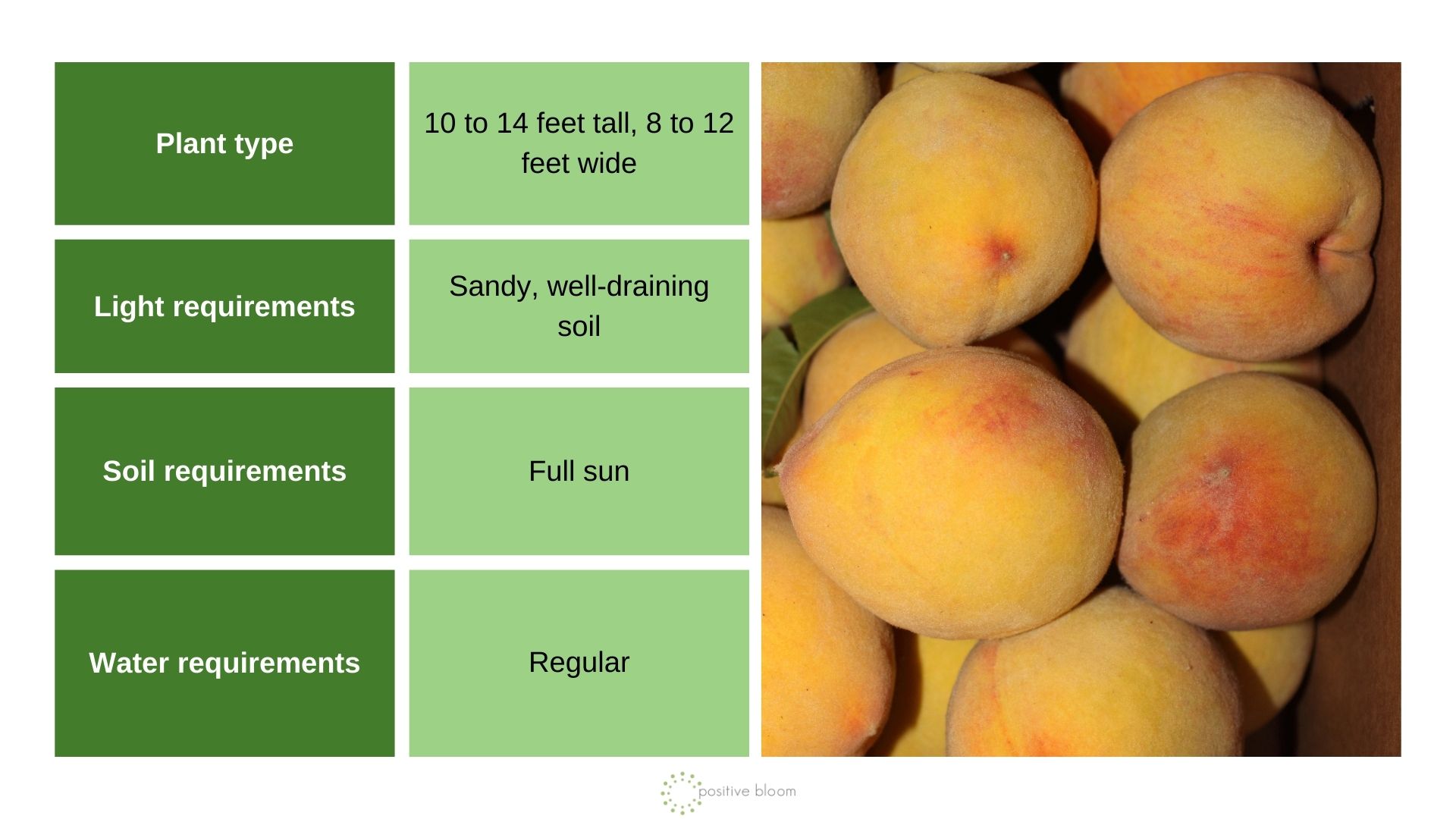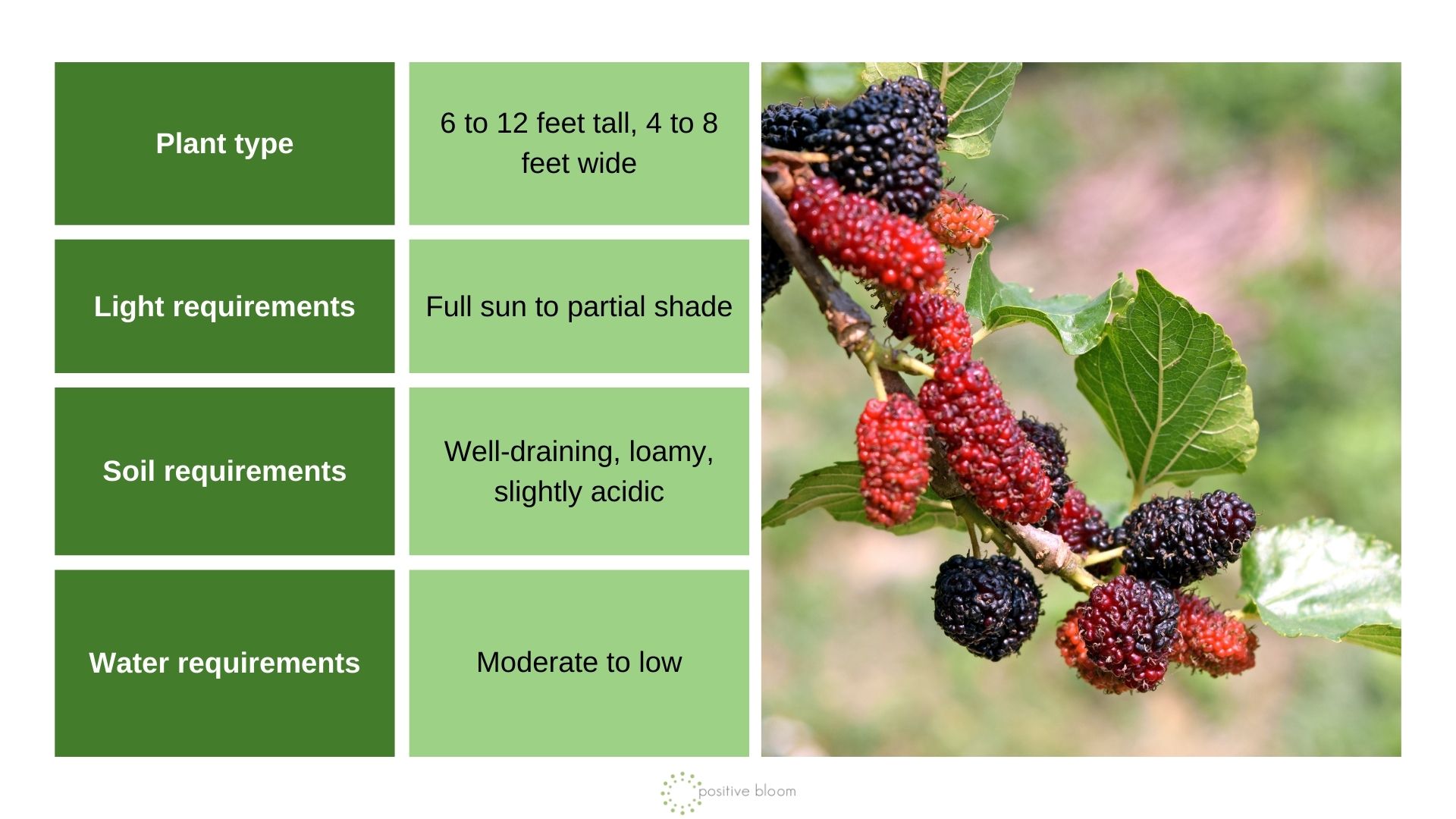Transform your garden into a fruit-lover’s paradise by planting bare root fruit trees. As the seasons change, it’s the perfect time to lay the foundation for a bountiful harvest next year.
If you don’t have enough garden space, you can try and grow fruit trees in large containers on your patio. However, it’s important to get varieties that are suitable for growing in one!
In this article, we are going to talk about bare root fruit tree choices to ensure a bumper crop in the season to come. We’ll provide insights into selecting, planting, and caring for these fruit trees, setting the stage for an abundant and delicious future in your orchard.
So, let’s get started!
1. ‘Honeycrisp’ Apple
We are starting off our list with popular apple trees called ‘Honeycrisp’. These varieties are known for their sweet, crisp, juicy fruits, and compact size that can be kept small with pruning.
With frequent pruning, you can keep these trees below 10 feet tall. These apple varieties perform well in USDA hardiness zones 4 through 9, and need full sun and well-draining soil to perform well.
I would recommend planting some crop plants that serve as a pollinator patch nearby!
2. ‘Morris’ Plum
‘Morris’ plum trees produce medium-sized, sweet, and juicy plums. The fruit is typically dark purple or red when ripe, and the tree itself produces attractive white blossoms in spring.
This plum tree is a great choice for USDA zones 5 through 8. All you have to do is some light pruning and trimming in the summer to encourage healthy growth and get a bountiful harvest. It’s important to have suitable pollinators for plums to be produced.
The ‘Morris’ plum is a fast-growing variety that is relatively resistant to pests and diseases. It grows well in both full sun and light shade. Fertile and well-draining soil will keep it thriving!
3. American Persimmon
American persimmons produce small, sweet, and flavorful fruits with a unique flavor. The tree features dark green foliage and attractive orange fruit when ripe. Hummingbirds, mockingbirds, and waxwings also often enjoy these delicious exotic fruits.
American Persimmon trees are known for their adaptability and resistance to pests and diseases. They are hardy in zones 4 through 9. You should also make sure that pollinators are around, but you can also choose a self-fruitful variety called ‘Fuyu’.
Make sure to plant your persimmon tree in full sun; however, they can also tolerate some shade. Minimal pruning is typically needed. Remove dead or crowded branches as necessary.
4. Nectarine
I bet everyone is familiar with nectarines, but did you know that they are super easy to grow?
That’s right, there are nectarine trees that are self-pollinating so you don’t have to worry about the pollinator population in your area. Plus, you can find dwarf and semi-dwarf varieties that can fit into any garden!
These trees produce smooth-skinned, juicy, and sweet fruit similar to peaches but without the fuzz. They also produce lovely pink and white flowers in spring that make your garden look more elegant and lively.
Nectarine trees grow well in zones 5 through 9, although there are varieties that can adapt to cooler temperatures such as ‘Fantasia’ and ‘Arctic Jay’ nectarines. ‘Zephyr’ and ‘Double Delight’ are more suitable for tropical climates.
Make sure that your nectarines receive at least 6 hours of sunshine during the day. Regular pruning is essential to maintain tree shape and improve fruiting. Nectarines can be pruned more heavily than peaches to encourage better air circulation.
You might also find interesting: Everything You Need To Know About Peaches In Season
5. ‘Little Miss Figgy’ Fig
‘Little Miss Figgy’ is a dwarf fig variety that produces small, sweet, and flavorful figs along with leafy foliage, making it a perfect addition for smaller gardens or even container growing.
This cute little fig variety grows well in USDA zones 7a through 10b. It is a self-fertile plant, although you should add some pollinating partners nearby. These figs grow well in well-draining soil that is slightly alkaline.
A common fig growing mistake is not pruning them, so make sure to do it when the timing is right. Other than that, you shouldn’t have any issues. You can try other fig varieties such as ‘Celeste’, ‘Chicago Hardy’, and ‘Brown Turkey’.
6. ‘Bartlett’ Pear
If your yard is quite small, then the ‘Bartlett’ pear is the ideal choice for you. These trees produce yellow pears with a sweet flavor, along with white blossoms in spring that make your garden look more charming.
‘Bartlett’ pears grow well in zones 5 through 7. They do best in full sun, but they can adapt to growing in some shade. Regular pruning encourages fruiting and helps maintain tree shape. They benefit from cross-pollination.
7. ‘Montmorency Pie’ Cherry
Here is yet another popular tree in the US. ‘Montmorency Pie’ cherries are known for their red fruits that are perfect for making pies!
They produce white flowers in the spring that eventually develop into clusters of cherries with prominent red colors. These cherry trees grow best in USDA zones 4 through 7, and they are also self-pollinating!
Plant them in a place with full sun exposure and well-draining soil. Water your cherries regularly until they are well-established. Then, you can ease up on the watering because they become drought tolerant.
You might also like: Tips And Tricks For an Awesome Zen Garden Ideas On A Budget
8. ‘Elberta’ Peach
The ‘Elberta’ peach not only brings an ornamental addition to your landscape with its perfect pink and purple flowers, but it also rewards you with the most delicious peaches ever!
These peach trees thrive in USDA zones 5 through 9, and they need a plenty of space to grow; therefore, they might not be ideal for small gardens. Plant your ‘Elberta’ peach in a place where it can receive at least 6 hours of sunshine.
They are self-fertile so they don’t need another tree for pollination. Still, you can plant it to boost fruit production. Please note that peaches are not drought tolerant and need regular watering.
Here’s How To Grow A Peach Tree From Planting To Harvest
9. ‘Everbearing’ Mulberry
‘Everbearing’ mulberries are known for their sweet, juicy, and often dark-colored fruit. The mulberry tree features glossy green leaves and can grow into a small to medium-sized tree. Their lush leaves will also offer some color and shade during the growing season.
This mulberry grows well in zones 6 through 10. Plant your mulberry in a warm, sunny spot with well-draining soil. Prune it during the colder months in order to maintain the tree’s compact shape.
Many mulberry trees are self-pollinating, meaning they don’t require a second tree for fruiting. Additionally, most of them produce fruit in the first year of growing!
10. Pomegranate
We are ending our list with sun-loving pomegranates!
Pomegranate trees produce unique fruits with jewel-like seeds that have a tart-sweet flavor. They produce beautiful orange-red flowers and are valued for both their fruits and decorative properties.
Pomegranate trees grow well in zones 8 through 10, and they should be planted in a place where they can receive direct sunlight throughout the day. You can even grow them in large pots, just as long as they are in the sun!
You don’t have to plant another tree as they are self-fruiting. Well-draining soil that is also slightly acidic is ideal for growing pomegranate trees.
You might find this useful: How To Plant A Tree In 3 Easy Steps

